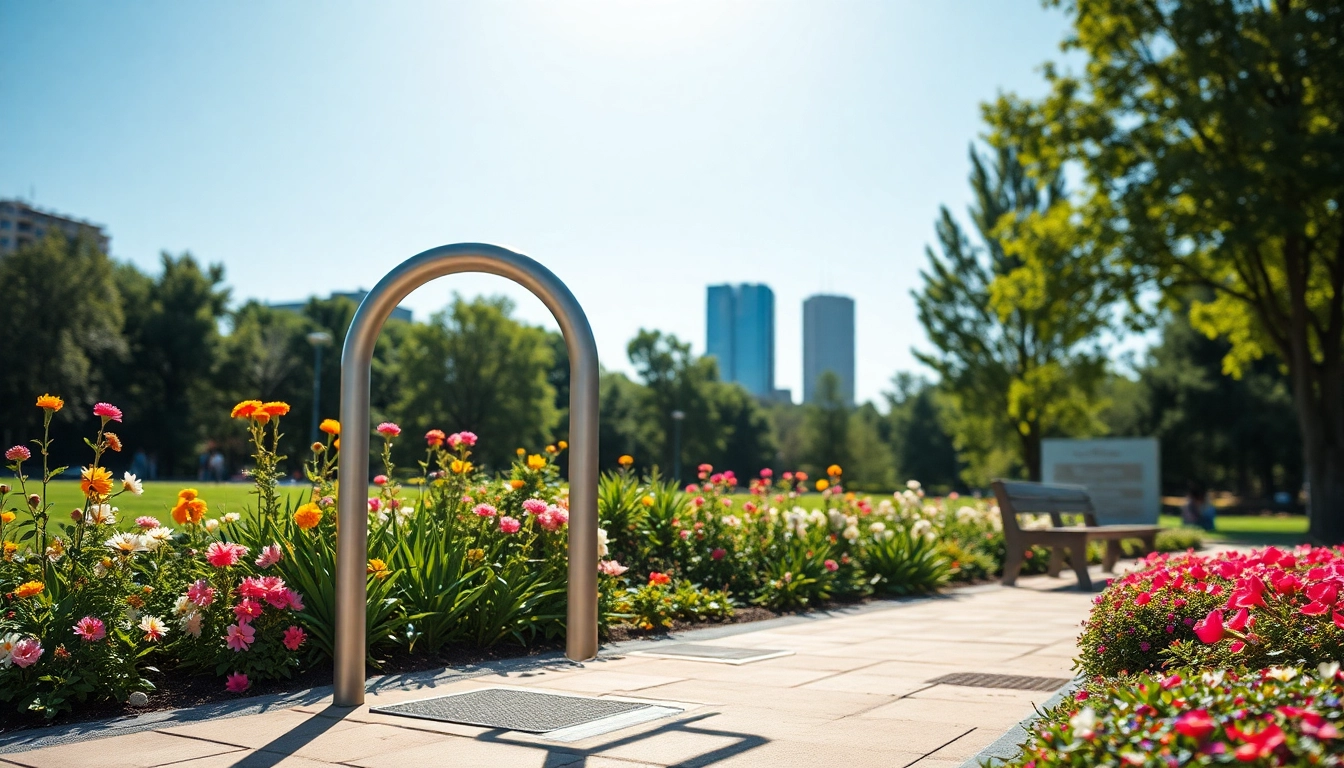Understanding Designer Bike Rack Options
The choice of a Designer bike rack is an essential aspect of bike parking solutions that not only fulfill functional requirements but also enhance aesthetic appeal. These racks can be found in various styles, materials, and configurations, catering to both public and private spaces. In this comprehensive guide, we will delve into the myriad of options available, ensuring you are well-equipped to make informed decisions about your bike storage needs.
Types of Designer Bike Rack Designs
When selecting a designer bike rack, understanding the different types of designs is crucial. Bike racks can vary widely in terms of style, functionality, and purpose. Here are a few popular designs:
- U-Shaped Racks: These racks provide secure bike locking capabilities with a streamlined, minimalist look.
- Wave Racks: Often more artistic, these racks allow for flexible parking arrangements while accommodating multiple bikes.
- Artistic Racks: Designed to be visually striking, these racks are often themed or custom-made, appealing to those prioritizing aesthetics alongside functionality.
- Wall-Mounted Racks: Ideal for space-saving solutions, these racks can be fixed to walls, offering a great solution for areas with limited ground space.
- Two-Tier Racks: These vertical racks efficiently utilize space, allowing for more bikes to be parked vertically.
Choosing the right type of bike rack depends on your specific needs, the number of bikes to be accommodated, and the intended location. Exploring various designs can help you find a practical yet stylish solution.
Materials and Durability
The materials used in the construction of designer bike racks play a significant role in determining their longevity and sturdiness. Common materials include:
- Steel: Known for its strength and durability, steel is commonly used and can withstand various weather conditions when properly treated.
- Aluminum: Lightweight and corrosion-resistant, aluminum is an excellent choice for outdoor installation as it is resistant to rust.
- Wood: Offering a more natural aesthetic, wooden bike racks can add warmth to a space, although they often require more maintenance.
- Concrete: Extremely durable, concrete racks are suitable for permanent installations and can support heavy loads.
Understanding the advantages and drawbacks of these materials, such as weight, cost, and maintenance requirements, enables you to choose a rack that balances aesthetics with durability.
Assessing the Space Requirements
Before purchasing a designer bike rack, assessing your available space is critical. Various factors should be taken into account:
- Available Area: Measure the space where you intend to install the bike rack. Ensure there is enough room for maneuvering bikes in and out without obstruction.
- Height and Width: Depending on the type of rack, consider the height and width to avoid congestion and ensure ease of access.
- Proximity to Other Structures: Evaluate adjacent locations, including pathways and landscaping, that might conflict with bike rack placement.
Once you’ve accurately gauged the space, you can make a more strategic decision on which style and models will best fit your requirements.
Benefits of Installing a Designer Bike Rack
Investing in a designer bike rack not only satisfies parking needs but also brings several other benefits that enhance both user experience and property value.
Enhancing Aesthetic Appeal
Designer bike racks can significantly elevate the aesthetic appeal of both private and public spaces. Incorporating an appealing design can harmonize with the surrounding architecture, landscape, or urban environment, serving as both a functional object and a piece of art. Whether installed in a park, beside a cafe, or in an office building, a well-designed bike rack can beautify areas and attract cyclists, which in turn encourages cycling as a mode of transport.
Improving Bike Security
Security is a paramount concern for bike owners. A designer bike rack can improve safety and security as it allows users to lock their bikes securely, preventing theft. Many racks feature designs that enable multiple locking points which provide added security for different bike types. Moreover, well-placed racks in well-lit areas can act as a deterrent against theft, making potential thieves less likely to target bicycles parked in those spaces.
Encouraging Sustainable Transportation
By installing a designer bike rack, you promote cycling as a sustainable form of transportation. Encouraging more individuals to cycle reduces traffic congestion, lowers carbon emissions, and contributes to healthier communities. In addition, offering a safe and attractive place to park bikes encourages more people to adopt biking as part of their daily commute, thus volume of bicycle usage rises.
Choosing the Right Location for Your Designer Bike Rack
Setting up the bike rack in an appropriate location is vital for maximizing its utility. The right location can greatly influence usability and accessibility.
High Traffic Areas vs. Residential Spaces
Consideration of foot and bike traffic is crucial. High-traffic areas such as shopping centers, parks, and workplaces are ideal for bike racks, as they attract more cyclists. In contrast, residential spaces may require fewer racks or different styles, perhaps prioritizing smaller, more discreet options. Understanding the cycling patterns of the target audience will help in making an informed decision.
Accessibility Considerations
Accessibility for all users should be a priority during planning. Ensure the bike rack is compliant with accessibility standards, allowing ease of use for those with mobility challenges. The design and placement should facilitate uncomplicated access to the bike rack without hindering pedestrian traffic.
Weather and Environmental Factors
Consider the climate when choosing the location and type of bike rack. For instance, areas prone to heavy rain or snow might require more durable materials or protection strategies. In contrast, sun exposure may necessitate UV-resistant coatings to prevent fading or structural degradation. Evaluate the local environment and weather patterns to ensure longevity and functional performance.
Installation Tips for Designer Bike Racks
Correct installation is crucial for ensuring the functionality and safety of the Designer bike rack. Here are some installation tips:
Ground Preparation and Surface Considerations
Prior to installation, make sure the ground is properly prepared. This may include:
- Clearing the area of debris and vegetation.
- Leveling the ground to prevent any wobbling or instability once installed.
- Choosing appropriate surfaces, such as concrete for permanent installations or gravel for temporary setups.
Ensure that the surface can adequately support the bike rack and resist erosion or shifting over time.
Tools and Equipment Needed
Depending on the rack design, various tools may be required, including:
- Drills and bits for anchoring
- Wrenches and screwdrivers
- Level to ensure proper alignment
- Measuring tape to gauge spacing accurately
- Safety gear including gloves and goggles during installation
Having the right tools on hand can greatly simplify the installation process and lead to better outcomes.
Safety and Compliance Regulations
Be aware of local regulations regarding bike rack installations. Compliance with zoning laws and safety codes is essential to avoid potential fines or legal issues. Additionally, ensure that the bike rack installation does not impede public pathways or violate accessibility standards. Acquaint yourself with necessary permits if applicable, and always prioritize user safety.
Maintenance and Care for Your Designer Bike Rack
Once installed, regular maintenance will prolong the lifespan of your designer bike rack while ensuring it remains functional and visually appealing.
Routine Cleaning Best Practices
Keeping your bike rack clean not only enhances its appearance but also prevents rust and deterioration. Follow these tips for effective cleaning:
- Regularly remove debris, dirt, and leaves.
- Use soaps and water to clean surfaces, avoiding harsh chemicals that can damage materials.
- For metal racks, consider using a soft brush to scrub away any stubborn grime.
Establishing a cleaning routine can significantly reduce long-term maintenance costs and the need for repairs.
Inspecting for Wear and Tear
Routine inspections are critical for identifying potential issues early. Check for:
- Creaking or loose bolts that may affect stability.
- Corrosion on metal surfaces, particularly in wet climates.
- Cracks or warps in wooden components that may compromise integrity.
Addressing minor wear and tear promptly can prevent more significant issues down the line.
Enhancing Longevity Through Protective Coatings
Applying protective coatings can enhance the durability of your designer bike rack. Depending on the material, consider:
- Galvanization for steel racks to prevent rust.
- Paint or sealants that provide UV protection for wooden racks.
- Regular application of anti-rust sprays on metal components.
Investing in protective coatings can save you from expensive repairs and replacements, ensuring your bike rack remains operational for many years.




